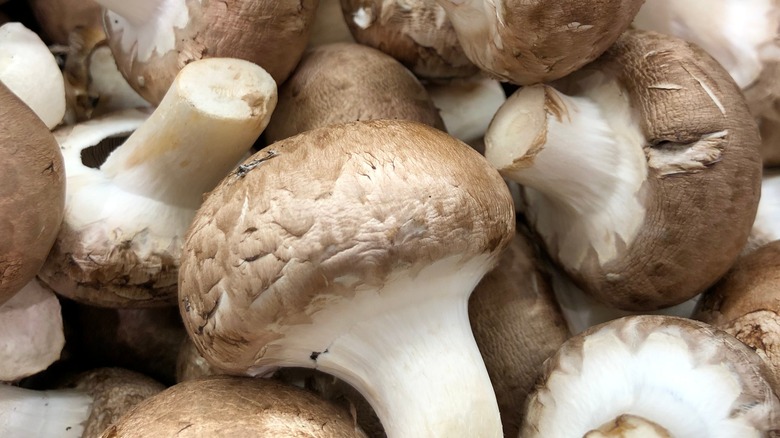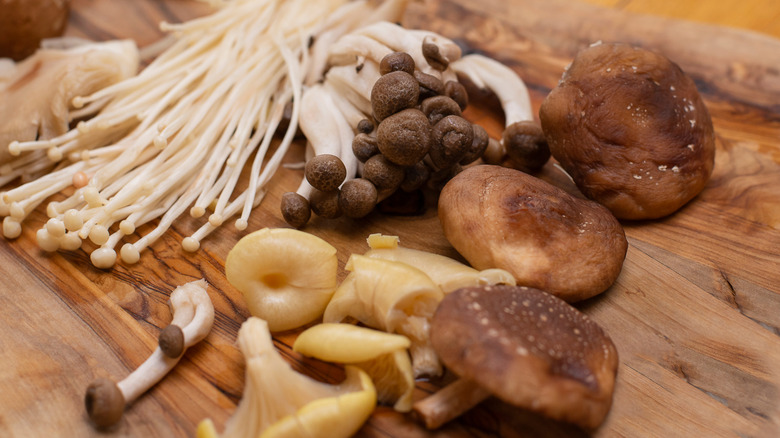The Smashing Method To Give Mushrooms A Mosaic Of Textures
Mushrooms are magical, and in more ways than one. From their brain health benefits to their mood-boosting vitamin D, and from their role in your gut health to support your immune system, they do it all (via UCLA). Their "superfood" reputation is what has led them to be used in everything from "chagaccinos" and mushroom coffee to plant-based meat alternatives. Still, they're equally as beneficial and delicious in just their purest form. Throw them in a pan with butter, add some salt and pepper, and you have yourself a savory side.
Mushrooms are culinary treasures and are also used in everything from risottos to tacos — whether it's a fungi delicacy, among the likes of chantarelles, matsutakes, or black trumpets, or one of the more commonly found portobellos or criminis. But, as you've probably prepared most of your vegetables for as long as you've known how to, they're almost always sliced into uniform pieces. However, when it comes to mushrooms, at least, that's one norm you're encouraged to break.
Use this technique for a more unique mushroom dish
Whether you're a home cook or a trained chef, you've most likely learned from someplace — or someone — that you should cut your food into uniform pieces. Not only is it satisfying to see your foods cut into identical shapes and sizes, but it actually ensures that each of them cooks at the same rate, yielding the same results. It makes perfect sense, so why wouldn't you do it with your mushrooms? But, just as they've changed the "superfood" game, mushrooms are changing the rules.
The next time you cook mushrooms at home, you can forget everything you were taught about chopping. In fact, you can even forget your knife. Instead, use your hands to tear apart the mushrooms' caps (if they have them) from their stems. Then, using the heel of your hand, crush their caps and break them into different-sized pieces. This, of course, will work better with meatier mushrooms such as portobellos and creminis and probably not more delicate ones such as black trumpets or enokis.
Still, the irregularity will have the opposite effect as your typical uniform style of cutting — creating a mosaic of crispier and nuttier smaller pieces and chewier and meatier larger pieces.

